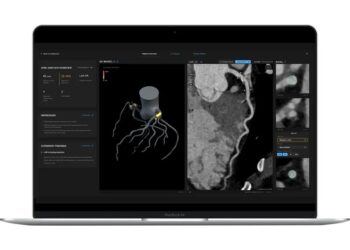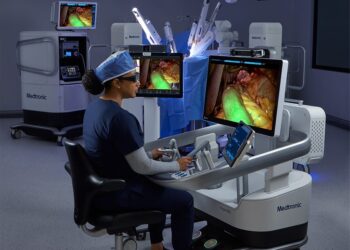### The Sparse Revolution: Why Mixture of Experts is Redefining AI Scale
For the past several years, the narrative around Large Language Models (LLMs) has been dominated by a single, ever-increasing metric: parameter count. We’ve watched the numbers climb from millions to billions, with whispers of trillion-parameter models on the horizon. This has led to a widespread belief that bigger is always better. But this focus on raw size overlooks a more profound and elegant revolution happening within the architecture itself: the rise of sparsity, specifically through the Mixture of Experts (MoE) model.
The latest generation of top-performing models, from Google’s Gemini to Mistral AI’s groundbreaking Mixtral 8x7B, aren’t the dense, monolithic behemoths you might imagine. Instead, they are sophisticated systems that leverage the MoE architecture to achieve immense scale without a proportional increase in computational cost. This isn’t just an incremental improvement; it’s a fundamental shift in how we build and deploy state-of-the-art AI.
—
### Unpacking the Architecture: A Committee of Specialists
So, what exactly is a Mixture of Experts? Imagine you’re building a team to solve a complex problem. You could hire one supremely knowledgeable generalist who knows a bit about everything. Or, you could assemble a committee of world-class specialists—an expert in physics, another in history, one in creative writing—and a smart receptionist who routes each incoming question to the most relevant one or two specialists.
The MoE architecture operates on this latter principle. A traditional dense transformer model processes every token with its *entire* set of parameters. If you have a 175B parameter model, all 175B parameters are (theoretically) engaged for every single step. This is the generalist approach—incredibly powerful, but computationally brutal.
An MoE model replaces some of the feed-forward layers in the transformer architecture with an MoE layer. This layer consists of two key components:
1. **A number of “expert” sub-networks:** These are smaller, specialized neural networks. In the case of Mixtral 8x7B, there are eight such experts.
2. **A “gating network” or “router”:** This small network examines the input token and dynamically decides which experts are best suited to process it. It doesn’t just pick one; it typically assigns a weighted score, activating a small subset of the top-k experts (for Mixtral, k=2).
The magic is that for any given token, only a fraction of the model’s total parameters are actually used. Mixtral 8x7B has a total of ~47 billion parameters, but during inference, it only uses the active parameters of two experts at a time, resulting in the computational cost of a ~13B parameter model. This decouples the model’s total knowledge (stored in the full parameter set) from its per-token inference cost (determined by the active parameters).
### The Inevitable Trade-Offs
If MoE offers the scale of a massive model with the speed of a smaller one, why isn’t every model built this way? The answer lies in a crucial set of trade-offs that engineers must navigate.
**The Pro: Unmatched FLOPs Efficiency**
This is the primary benefit. You get the representational capacity and nuance of a model with a vast number of parameters, but the floating-point operations (FLOPs) required for inference remain manageable. This makes it feasible to serve a much larger, more knowledgeable model than would otherwise be possible with the same hardware budget.
**The Con: VRAM Hunger**
Here’s the catch: while only a few experts are *active* for any given token, the *entire* model—all experts and the gating network—must be loaded into memory (VRAM) to be available for selection. A model like Mixtral 8x7B, despite having the inference speed of a 13B model, requires the VRAM to hold all ~47B parameters. This makes MoE models memory-intensive and pushes the boundaries of even high-end enterprise GPUs, posing a significant challenge for local deployment on consumer hardware.
**The Con: Training Complexity**
Training MoE models is notoriously tricky. A common failure mode is representational collapse, where the gating network becomes lazy and defaults to routing most tokens to the same few “favorite” experts. This leaves other experts under-trained and the model unbalanced. To combat this, researchers employ sophisticated techniques like adding an auxiliary “load balancing” loss, which incentivizes the router to distribute work more evenly across all available experts.
—
### Conclusion: From Brute Force to Intelligent Design
The rise of Mixture of Experts signals a maturation in the field of AI. We are moving beyond the brute-force approach of simply building ever-denser models and are now focusing on more intelligent, efficient, and biologically-inspired architectures. Sparsity allows models to scale their knowledge base without a linear scaling of computational demand.
MoE is not a silver bullet; its substantial memory requirements present a real engineering hurdle. However, it represents a powerful design pattern that will undoubtedly become a cornerstone of future foundation models. As we continue to push the boundaries of what’s possible, the key will not just be in counting parameters, but in understanding how they are structured, accessed, and utilized. The sparse revolution is here, and it’s far more nuanced than just a number on a spec sheet.
This post is based on the original article at https://www.therobotreport.com/brookfield-partners-figure-ai-develop-humanoid-pre-training-dataset/.






















